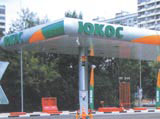All Russian to be designed
Russia is waking up to the importance of design. Richard Clayton looks at the opportunities this fast-growing economy can offer British consultancies

Is Moscow ready for Kate Moss? We should find out early next year, when Burberry opens its first store in the Russian capital. It’s a sign of the times that this most contemporary icon of British style will soon be gracing billboards in Red Square. After a turbulent decade, the Russian economy is stabilising and UK design groups are increasingly looking east.
London group Big Idea Brand Management is in the process of forming an alliance with Russian consultancy Mildberry (DW 16 October), while Landor Associates has landed the six-figure task of rebranding Siberia Airlines (DW 9 October). On the product front, Ian Rudge has chosen Moscow as the venue for 100% Design’s first fully-fledged foreign venture – scheduled for 11-14 March 2004.
‘It was the one territory exhibitors were genuinely interested in,’ says Rudge. ‘The market opportunity is wide open. They don’t have a focused design event and we wanted to move quickly, before someone else did.’
A construction boom means that office developments need to be fitted out and the demand for contract furniture is strong. ‘Russians know what contemporary British design is about. [But] if people can’t see it, they won’t buy it,’ he adds.
With its ‘Wild East’ days largely behind it, Russia’s ambition is to achieve a sense of normality. Huge disparities do exist between haves and have-nots, but an emerging middle class displays very familiar aspirations.
‘When you get there, your preconceptions are altered,’ says Rudge, mentioning the ‘massive’ Ikea store in Moscow that achieved $100m (£60m) sales in year one, after forecasting $50m (£30m) in its first five. ‘It takes the romance out of [your arrival],’ he recalls.
Big Idea creative director Bill Wallsgrove adds, ‘Moscow is a quite amazing place to visit. You can see all the usual signs of a growing consumer base. There’s a lot of energy and excitement. People are ambitious and entrepreneurial. To some degree, businesses expanding there have a blank sheet of paper.’
Minale Tattersfield partner David Davis agrees. ‘The country has been moving at a tremendous pace since the fall of Communism and even within the past four years when I’ve had first hand experience [of the changes].’
His group has worked with Lukoil and Yukos, two of Russia’s biggest oil companies – the latter a global player run by Mikhail Khodorskovsky, one of the infamous ‘oligarchs’ who now preaches business ‘transparency’.
With BP entering Russia’s domestic market, Russian oil companies want ‘the very latest international style’ for forecourts and filling stations in order to keep up with evolving consumer tastes.
‘Russian people are very image-conscious and design clients are very fussy,’ Davis says.
‘Russians always want what’s top of the range, the latest mobile phone [for instance] as soon as it comes out. And the same goes for their design buying.’
Brand loyalty is rare, according to Tasmin Loxley, because of this appetite for novelty. As the art director at The Nest, she worked on the revamp of Russian coffee brand Ambassador (DW 29 August 2002).
‘People just jump from one thing to another. There’s no opportunity for brands to build strong relationships with their customers,’ she says.
According to Davis, some UK consultancies have been guilty of ‘patronising’ Russian brand owners – by thinking ‘whatever we give them will be better than what they’ve got’. This left clients ‘feeling aggrieved’.
‘You must remember this country was an empire – and still is in some ways,’ he says. ‘People won’t be talked down to.’
Clearly, UK groups have much to offer though, especially at a strategic level. Moscow-based Mildberry director Pavel Parfenov says, ‘Brand and corporate identity skills are becoming hot sells, as more marketers get interested in creating strong brands.’
But, he adds, many Russian companies are still likely to commission Russian groups – on account of both local knowledge and language barriers.
Local partners are crucial for UK design groups seeking to establish themselves, agrees Rudge. And Davis agrees that the normal rules of overseas engagement apply, as with any emerging market.
For Wallsgrove, the biggest stumbling block is not the culture or the national psychology, but the Cyrillic alphabet. Despite an essentially European consumer mindset, this makes design ‘implementation’ more like a project in China or Singapore, he says.
Moscow’s leading bars and restaurants would ‘stand their ground’ in any country in the world, as Davis observes. But you don’t need to be a student of Anton Chekhov to know that Moscow has never stood for the whole of Russia.
Nevertheless, if you happen to be browsing at 100% Design Moscow next year, don’t be surprised to see the locals wearing Burberry macs.
Russia’s vital statistics
• According to Trade Partners UK, exports to Russia grew by 38 per cent in the first quarter of this year
• The International Monetary Fund is predicting at least a 6.5 per cent increase in GDP this year
• Inflation is running at 8 to 10 per cent
• Currency volatility is generally a thing of the past. Since its steep devaluation in 1998, the rouble/ sterling exchange rate is around 50 to one
-
Post a comment




